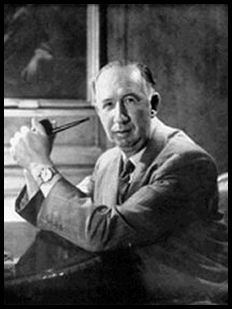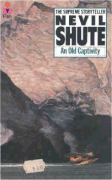Last September 2009, on our way back from a caravanning trip to Canberra, we detoured from the direct route home and drove to Mansfield to spend a couple of days touring around the very pretty part of Victoria in which Nevil Shute set the Australian part of his post-war story "The Far Country".
Mansfield is the name of the country town on which he based his larger regional town of Banbury. It is a lovely, open planned town with a very wide main street (wide enough to turn a bullock dray in the days of early settlement !)). As a result it now has a spacious feel with central gardens along its length. The Tourist Information Centre - a modern, custombuilt building near the old and now disused Railway Station, has helpful staff - although when we visited, no-one seemed to have any information on the places mentioned in NSN's story. "Oh", said one assistant, "I think one of our older helpers knows a little about that". Unfortunately she was not on duty that day. Neither were we fortunate enough to be in town during the two days on which the local Historical Society was open. (Always seems to work that way for us, alas).
Nevertheless, we set up our caravan in a nice little local park, and got out the book, brochures and maps to plot our way around the area.
Next day was a fine but cool early spring day, and we drove along the road towards Merrijig. Beautiful countryside - farmland set on gently rolling hills dotted with trees. Everything was green and fresh after winter, but with a sharp cold breeze coming down from the snow still on the high peaks of the Great Dividing Range. Merrijig is a very small settlement, more open (less-treed) than I expected. It is located about halfway between Mansfield and the popular ski resort of Mount Buller. The Hunt Club Hotel has been operating since 1873, although the building known to NSN was replaced with a more modern building in about the 1970s - I believe the earlier building had been burnt down. We had a very enjoyable lunch at the Hunt Club Hotel before continuing on our way.
The scenic area around Merrijig and the Delatite was used as the setting for the film "The Man From Snowy River" in 1982.
Continuing our drive towards the Howqua River and Sheepyard Flat (the setting for Billy Slim's hut), the road curved around wooded hills and skirted lush, green valleys. Both the Delatite Rivers and the Howqua were flowing and bubbling their way downstream and very scenic they were with the sun dappling on the water through the tall trees. The time of the year when we visited, was quite close to the time when NSN began the Australian part of his story, and masses of wattle trees were in full bloom, perfuming the air and brightening the already pretty countryside. It’s easy to see why he fell under the spell of this part of Victoria, and used it for his novel.
Further towards Sheepyard Flat the hills became steeper and the trees thicker.
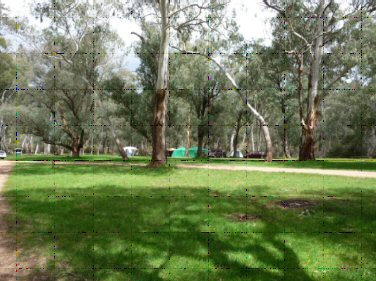 | Sheepyard Flat by the Howqua |
| Fry’s Hut (renamed as Billy Slim's home in TFC). | 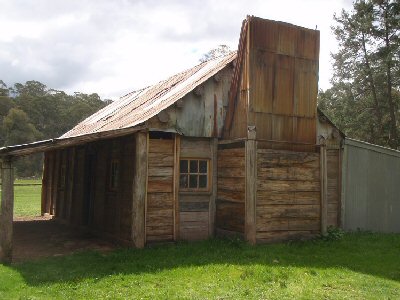 |
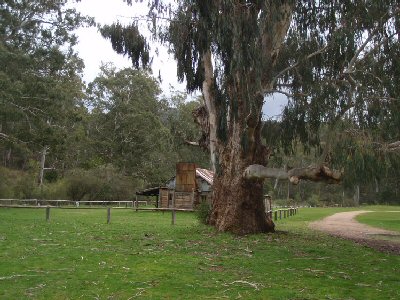 |
After a cuppa from our Thermos, we continued on our way along the road towards Woods Point - another timber-milling area set high in the hills amongst thick bushland. It would be a perfect setting for the timber-felling component of "The Far Country". With big heavy timber jinkers loaded with logs still passing us on the twisty road, it didn't seem too far distant from the time of TFC.
High up in the hills just past Woods Point is the area which was badly burnt during the 2009 February bushfires. It was sad to see the devastation, but equally good to see the signs of new growth springing up only six months or so later.
Making our way back to Mansfield via another route, we were satisfied we had seen much of the area of TFC. One of the farms has been named Leonora after the Dorman's farm, but we missed seeing this, otherwise my curiosity about the area has now been satisfied. It is a stunningly beautiful area of Victoria - and well worth a visit.
S. Beckett
15 September 2010

